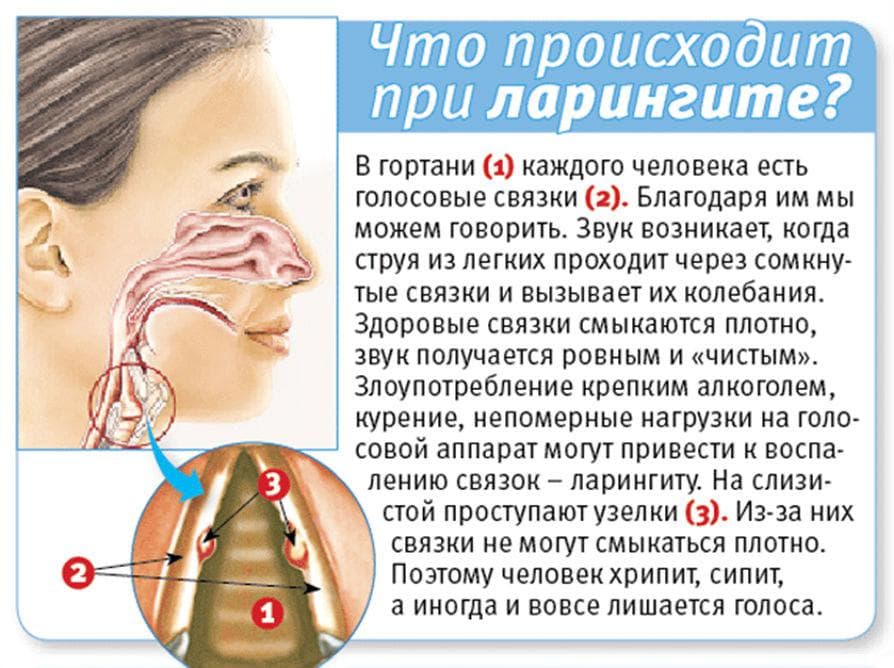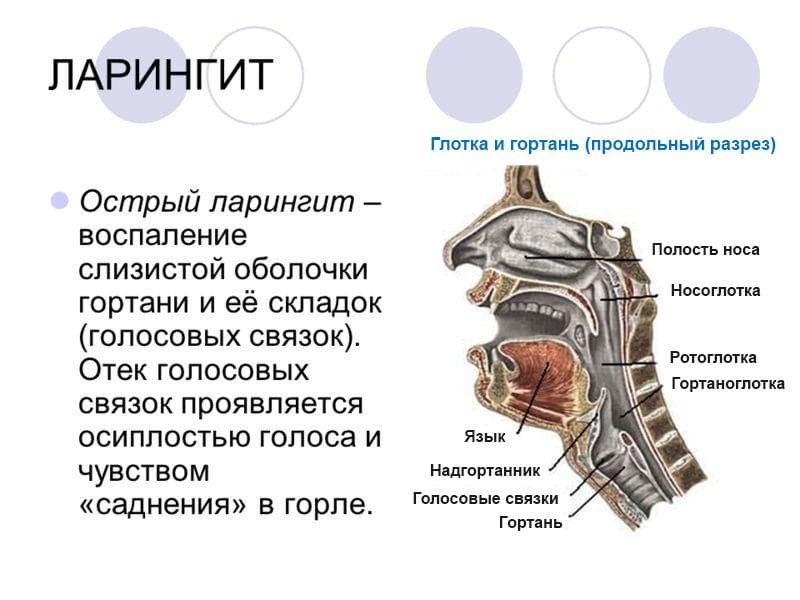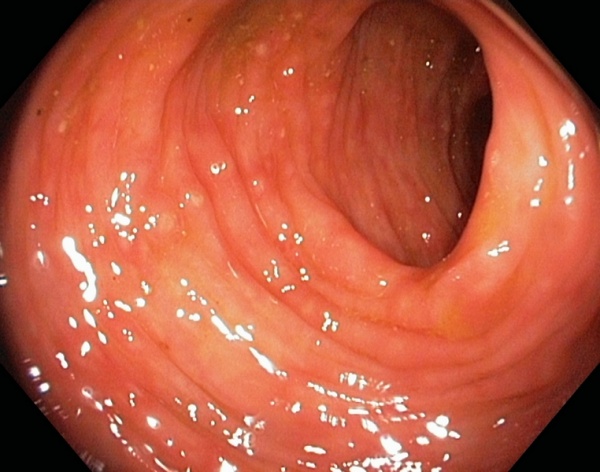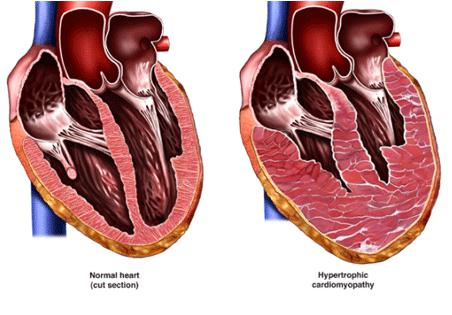I lost my voice due to a cold: what to do?
Very often, colds, as well as diseases of the throat, can provoke a loss of voice. In most cases, the main cause of the problem is laryngitis.
- A person can only speak in a whisper.
- The occurrence of physical or psychological paralysis of the ligaments.
- Hoarseness of voice.
- Pain in the throat.
- Ligament spasms.
Causes
The main cause of voice loss is infectious laryngitis. The disease can be both acute and chronic. In the first case, laryngitis is the result of viral infections, whooping cough, scarlet fever, and so on. In addition to voice loss, there are sore throats, an unproductive cough, followed by sputum production, fever, and headaches.
The acute form of laryngitis is very dangerous and does not accept self-medication. Otherwise, the disease is fraught with stenosis of the larynx.
The chronic form of laryngitis has an infectious origin. It is a consequence of constantly occurring acute inflammation of the larynx and. In this case, the voice does not disappear, but it "sits down" and becomes hoarse. In this case, the patient is tormented by cough and sore throat.
- Anatomical disorders of the larynx.
- Thickening of the vocal cords.
- Diseases of the thyroid gland.
- Damage to the nerves adjacent to the larynx.
- The formation of nodes or polyps on the vocal cords.
- Raising the voice, straining the vocal cords.
- , intake of alcoholic beverages, caffeine.
- Respiratory disorders.
- Neurological disorders and nervous stress.

Possible diseases
Inflammatory diseases of the larynx
- Acute catarrhal laryngitis. The disease is one of, measles, whooping cough and so on. The patient feels dryness in the throat, he is tormented by a dry cough, the temperature is almost always normal. With the right treatment, the voice is restored in a week.
- Chronic laryngitis. The main causes of the disease are breathing through the mouth, chronic sinusitis, tuberculosis, exposure to dust, gases, temperature changes, diseases of the heart and blood vessels.

Motor disorders of the larynx. They arise due to a sharp increase in the functions of the larynx or their suppression. The disorder manifests itself as convulsive closure of the glottis.
Benign and malignant tumors in the larynx
- Benign tumors of the larynx. They often occur in people whose occupation is associated with the active use of the voice. Benign formations may be the result of chronic laryngitis. They are represented by fibromas, cysts, angiomas, and so on.
- Malignant tumors of the larynx. This group includes cancer of the larynx, which develops due to smoking, alcohol, exposure to dust, radiation, excessive vocal loads, and so on.
Functional dysphonia
- Hypotonic dysphonia. The reasons may be voice loads, tonsillitis, bronchitis, stress, and so on. At the same time, there is no inflammation in the larynx and trachea, but the tone of the vocal folds is reduced.
- Hypertonic dysphonia. The tone of the vocal cords increases due to overstrain of their muscles. The voice becomes hoarse, there are sore throats, spasms.
- Spasmodic dysphonia. The disease often occurs in violation of the muscles of the larynx and respiratory muscles that occur during stress and mental trauma.

Diagnosis and treatment methods
Diagnosis of voice loss depends on what symptoms accompany it, as well as on the individual characteristics of the sick person. Careful differentiation is needed to make a correct diagnosis. It will exclude or vice versa confirm such dangerous diseases as cancer and tuberculosis.
Medical treatment
If the loss of voice is due to any physical reason, then it is easy to find out on examination. In the case when the causes are psychological factors, the diagnosis becomes more complicated. Therefore, if you lose your voice, you may need to consult the following specialists:

- Otorhinolaryngologist;
- Therapist;
- Speech therapist;
- Neurologist;
- Psychotherapist;
- Foniatr.
Treatment of voice loss includes measures for the rehabilitation of the patient, consultation with a doctor, traditional medicine, and surgery. In addition, treatment should be aimed at eliminating the underlying disease.
- Antitussives and expectorants. They are recommended for pain associated with loss of voice and sore throat, with frequent painful coughing.
- antiseptic solutions. The preparations are intended for gargling. They allow you to remove inflammation, kill all pathogenic microorganisms and prevent infection and inflammation from spreading further.
- Antivirals, antibiotics. They are prescribed only by a doctor; in no case should you prescribe a course of these drugs for yourself.
ethnoscience
In addition to traditional medicine, folk remedies can also help restore the voice:

- Honey, milk, butter. Dissolve one teaspoon of honey and a small piece of butter in a glass of warm milk. The resulting drink is taken between meals. Milk with butter and honey will soften the throat and eliminate coughing.
- Three teaspoons of crushed husks are poured into two glasses of water, after which they are put on fire. After boiling, cover with a lid and leave for one hour. After that, the water is filtered from the husk and gargled with her throat.
- Mogul. Mix two egg whites, two teaspoons of sugar and fifty grams of cognac. Drink in small sips with water.
- Milk, figs. Pulp of figs is poured with milk. The mixture is heated, then drink one glass three times a day.
- Soda, oil inhalations. They will allow you to remove the swelling of the mucous membrane of the larynx, restore the voice.
- Garden turnip. Two tablespoons of chopped turnips are boiled in a glass of water for fifteen minutes. Drink one hundred milliliters of decoction four times a day.
- Carrot + dandelion (4:1) two glasses a day.
- Carrots + spinach (2:1) two glasses a day.
- Warm cabbage juice in half a glass three times a day (half an hour before meals).
Video
findings
After the restoration of the voice, one should take care of the vocal cords, since it is during this period that they are prone to re-disease. Therefore, within a week after recovery, it is recommended to carry out activities to strengthen the ligaments.
- Intercostal neuralgia - what is it and how to treat
- How to quickly get rid of dry corns on the legs
- How to treat left ventricular hypertrophy
- Rating of the best drugs for rotavirus for children
- Making tea from currant leaves, the benefits and harms of the drink
- How to drink hydrogen peroxide according to Neumyvakin - an oral regimen
- Features of the treatment of plantar fasciitis with folk remedies
- The composition and beneficial properties of parsley root
- How to get pregnant quickly? Folk remedies
- Herbs-ants in the "pot-bellied" period or the use of herbal medicine during pregnancy
- Why does a sore throat and dry cough occur, and what treatment is required?
- Guy's Room Design: Ideas and Examples
- General rules for drawing up a foundation plan House foundation drawings
- modern art deco bedroom small art deco bedroom
- Pansies: characteristics and photos of flowers
- Making an art deco bedroom: the choice of materials Beige art deco bedroom
- Bedroom interiors in art deco style Bedroom art deco style beige
- Young: planting and care in the open field Young planting and care in the open
- Varieties for open ground
- Pansies: cultivation and care in the open field









